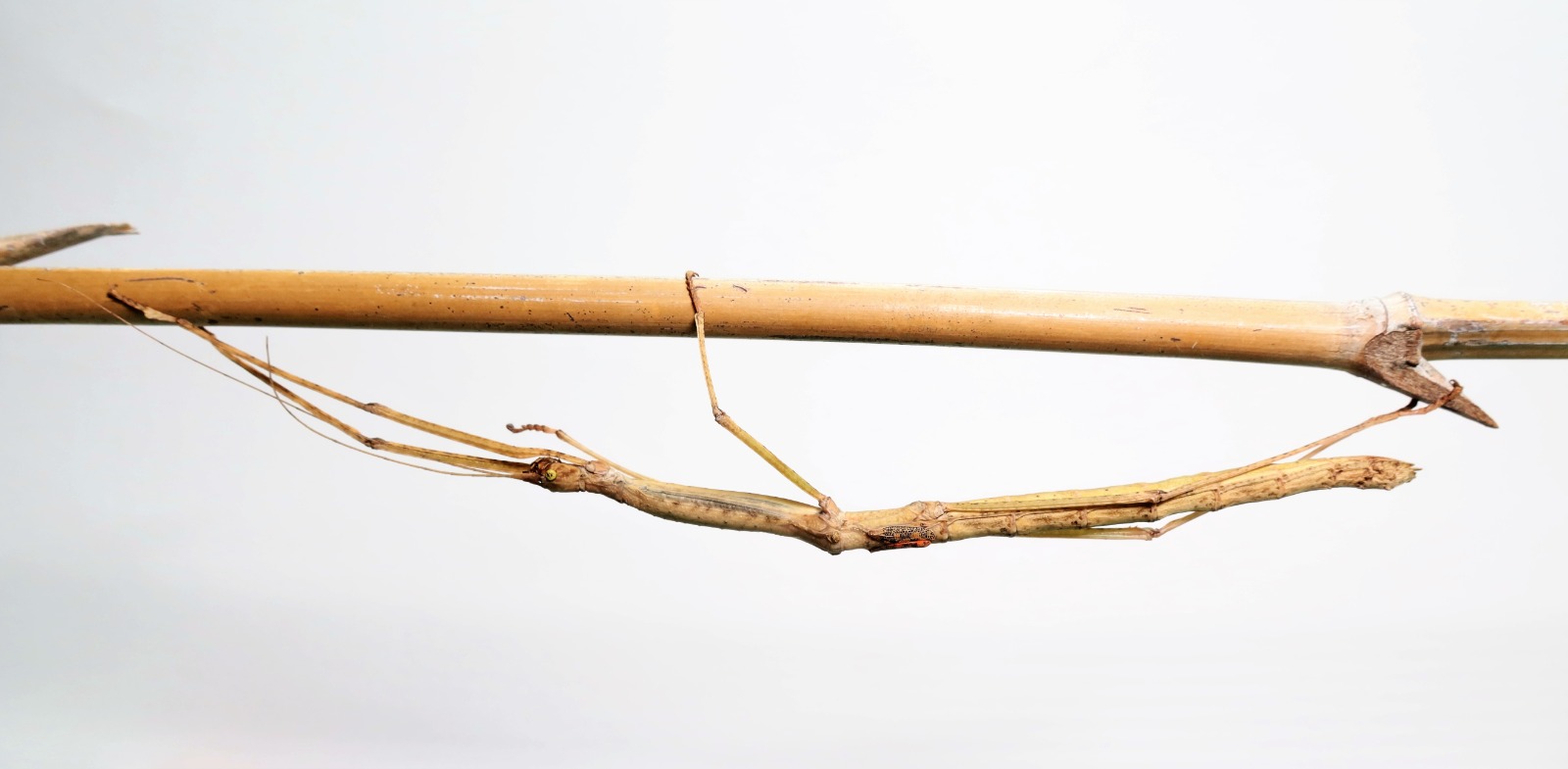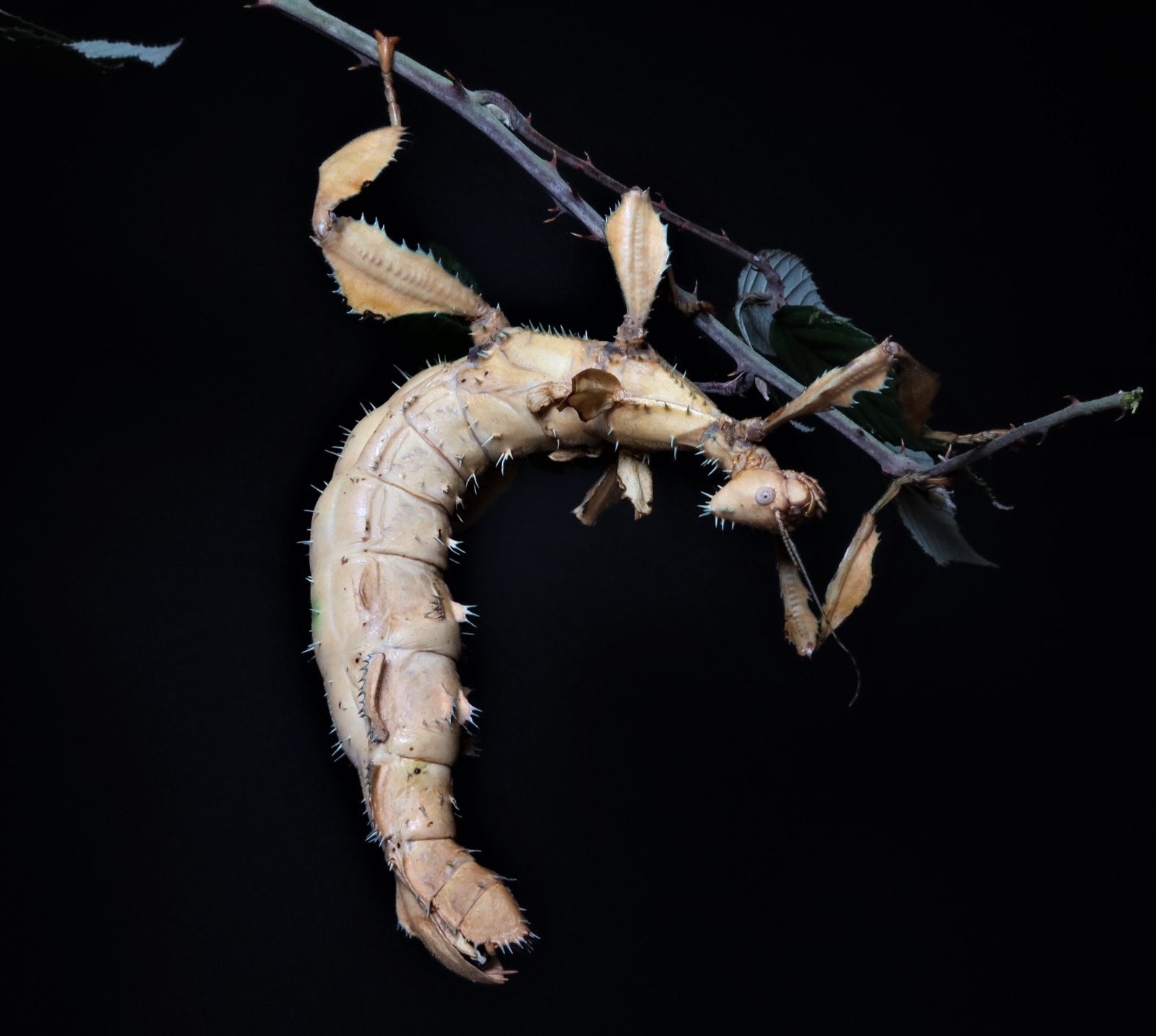How to Breed Phasmids: A Complete Guide to Stick and Leaf Insects
How to Breed Phasmids: A Complete Guide to Stick and Leaf Insects

Stick insects and leaf insects are among the most fascinating creatures in the invertebrate world. With their incredible ability to blend into their surroundings, these insects seem straight out of a fantasy story. Breeding phasmids is not only an educational and relaxing activity but also an opportunity to observe some of nature’s most extraordinary adaptations up close. Whether you’re an entomology enthusiast or a curious beginner, this guide will provide all the information you need to care for these amazing animals.
There are numerous species of phasmids, each with its own characteristics. Some of the most popular in breeding include Phyllium philippinicum, which perfectly mimics a green leaf; Phaenopharos khaoyaiensis, with its slender, elongated body; the mysterious Peruphasma schultei, known for its dark coloration and red eyes; the majestic Diapherodes gigantea, with its large size and vibrant colors; the impressive Heteropteryx dilatata, famous for its robust body and bright green coloration in females; and the unique Extatosoma tiaratum, known for its resemblance to a spiky twig and fascinating defensive behavior.
If you want to learn how to properly breed these fascinating insects, keep reading this comprehensive guide!
Recommended Phasmid Species for Beginners

If you’re new to phasmid breeding, some species are particularly suitable due to their resilience and ease of care:
- Phaenopharos khaoyaiensis: Considered the easiest species to breed, ideal even for children. It is very hardy and easily feeds on bramble and oak leaves. Additionally, it is parthenogenetic, meaning females can reproduce without the need for a male.
- Phyllium philippinicum: Perfect for those who want to start with a leaf insect. It feeds on bramble, rose, and guava leaves and can reproduce sexually, but in the absence of a male, it can also reproduce parthenogenetically.
- Extatosoma tiaratum: Very fascinating due to its large size and peculiar appearance. It is relatively easy to breed and feeds on eucalyptus, bramble, and oak leaves.
Habitat and Terrarium Setup

To ensure the well-being of phasmids, it is essential to recreate an environment similar to their natural habitat:
- Terrarium: It must be well-ventilated and appropriately sized for the species. A mesh terrarium of about 40x40x60 cm is ideal for most species and can easily house around 10-15 individuals.
- Substrate: Use absorbent paper, peat, or coconut fiber to maintain humidity.
- Humidity and Temperature: Most phasmids require humidity levels between 60% and 80% and temperatures between 20°C and 26°C.
- Lighting: Not necessary, but a natural day-night cycle helps maintain the insects’ biological rhythms.
Feeding
Diet is crucial for the well-being of phasmids. Each species has specific preferences:
- Phyllium philippinicum: Mainly feeds on guava, rose, and bramble leaves.
- Phaenopharos khaoyaiensis: Prefers bramble, oak, and eucalyptus leaves.
- Peruphasma schultei: Feeds almost exclusively on Ligustrum (privet).
- Diapherodes gigantea: Enjoys eucalyptus and bramble.
- Heteropteryx dilatata: Feeds on bramble, oak, and beech leaves.
- Extatosoma tiaratum: Prefers eucalyptus, bramble, and oak leaves.
Always provide fresh, pesticide-free leaves.
Reproduction
Phasmids have a relatively simple reproductive cycle, which varies by species:
- Some species are parthenogenetic, like Phaenopharos khaoyaiensis, meaning females can reproduce without a male.
- Others, such as Phyllium philippinicum, Peruphasma schultei, Heteropteryx dilatata require both sexes for reproduction. However, Phyllium philippinicum and Extatosoma tiaratum can also reproduce parthenogenetically in the absence of a male.
- Eggs are laid on the substrate or glued to the terrarium surfaces and may take from one to six months to hatch.
Egg Care and Management

Eggs must be kept in a humid but not overly wet environment to prevent mold. Here are some tips:
- Use perlite or vermiculite as an incubation substrate.
- Mist lightly to maintain the correct humidity level.
- Be patient: Some species require several months before the eggs hatch.
Conclusion
Breeding phasmids is a rewarding activity suitable even for beginners. With a proper habitat, a correct diet, and the right care, these insects can thrive and reproduce successfully. If you’re interested in purchasing phasmids for your breeding setup, visit our website to discover the available species and receive further advice!

